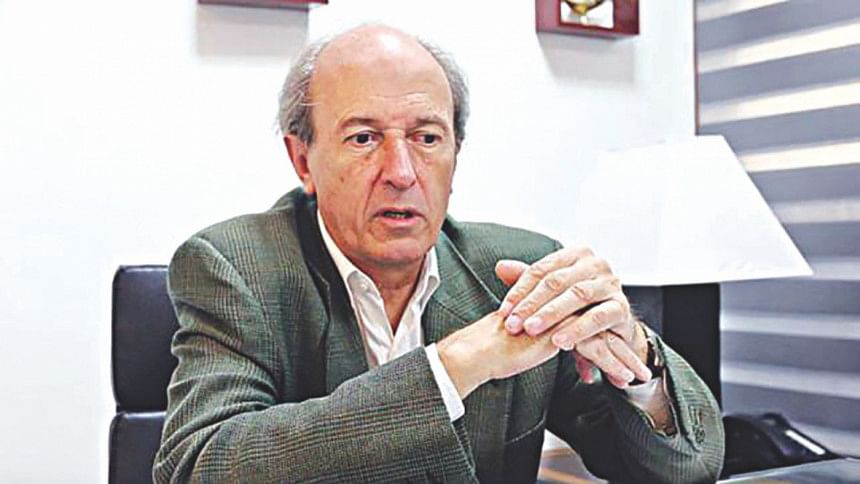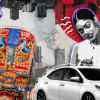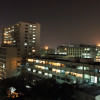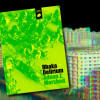'Use east Dhaka, decongest west'

The expansion of Dhaka city is showing no signs of slowing down. Private developers are pushing the boundaries of the metropolis by building eastwards and what currently exists as rural townships show the promise of being the future Dhaka city. Will we build it right this time, or will an unplanned urbanisation once again be the go-to-method? Martin Rama, chief economist for the South Asia region of the World Bank, talks to Zyma Islam of The Daily Star about the planned development of greater Dhaka.
TDS: How do you evaluate the current trend of urbanisation in the eastern part of Dhaka?
Rama: There is a lot already happening in East Dhaka and it is very diverse. The impression is that if this continues on the same path indeed there will be a lot of urbanisation, but it will be as messy at what we are seeing in the west. There are a very few roads going there, and they are relatively narrow. Except for the 300 feet wide road, the rest are all single lane roads and because people are building structures on both sides of the roads, widening them in future will be difficult.
There is an alternative vision. This area is remarkably big. Within 6 kilometres of the important parts of Dhaka, you have an area the size of Barcelona of Spain. This area is still rural, so acquiring land and building roads and public transportation systems will be cheaper. If the government takes advantage of this before the area gets packed, then we can see a very different Dhaka.
TDS: How well equipped do you think our city corporations are to take on the challenge of a bigger Dhaka? How do you evaluate the coordination and cooperation between different entities that manage and maintain Dhaka?
Rama: It is not like there is a vacuum of institutions in Dhaka. If anything, there is an excess of institutions with similar mandates that are stepping on each other's toes and are at cross purposes. They are all underfunded. One positive thing about the city corporations is that they have been expanded to include unions in what is called east Dhaka, but they don't have the resources to develop it. I don't get the sense that they have the strategic clarity to develop east Dhaka. They do have projects concerning lighting and sidewalks, but they are relatively minor compared to what is needed.
We need a series of major strategic interventions. One of them, related to water, is the construction of an embankment along the Balu river. Roads and rapid transits are needed to prevent congestion. On the softer side, they must create the impression of a modern business district with good service delivery so that people and firms move there. My impression is that none of the leaders has the vision or the resources to do this. Everybody is trying to improve the existing Dhaka and they are not thinking of the future.
There are very good examples too like the Hatirjheel Lake rehabilitation project, which was done in the same institutional setting. What was different about it was a very clear leadership all the way from the prime minister. If you just have the political will, you can slice this development into projects which are manageable -- embankments, land administration, transport and so on -- and allocate them to empowered agencies to do it.
TDS: A World Bank report has found that whatever road construction has been happening has not really changed the city's traffic congestion scenario. Why is that?
Rama: The report compares the area of roads built to the increasing population and increasing traffic and the difference is huge. When you reach that point, you don't have enough space for so many people. An innovation like smart traffic lights will not help. Because of the road systems all the traffic in Dhaka flows from north to south and you have a very few ways to go from east to west. We need to think of how to use east Dhaka to decongest west. Dhaka is very strategically located when it comes to corridors, whether you think of connecting Sylhet to Chittagong or South Asia to East Asia. All of that intersects towards the east of Dhaka, so connectivity from east to west is important. We think of Dhaka as a city with many problems, but it is probably one of the best pieces of real estate in Asia because it is located so well.
TDS: Your report finds that 80 percent of all the export-oriented industries are in greater Dhaka, and the residential neighbourhoods there belong to lower income classes like factory workers. If we develop, will we be creating an inclusive city or will we be gentrifying the area?
Rama: The social risk is the most important thing to consider. You have people with skills and people with no skills. Our simulations assure us that because prosperity spreads out, most wages will go up in a similar way. So that is not our main concern. Our main concern has to do with land and its price. The risk is on the eastern side because it is mostly rural. If east Dhaka becomes like Gulshan, then who will appropriate that gain is our major question. We are not sure that all the land acquisition by private developers is fully compensating the people that live there. We are not sure what will happen if 5 or 6 million move to east Dhaka -- who will they be buying from? An analysis we did of a mauza makes us believe that there are much fewer property titles than there are households. So there are many households that do not have a way to protect themselves during acquisition. The question is how to use the value of the properties and the holding tax to contain the unfairness.
TDS: What will development of east Dhaka look like? Will it have more financial zones or will it be a manufacturing district?
Rama: If development continues as it is now, it will probably be a manufacturing area. Manufacturing is land-intensive and if you make available a lot of land that no longer gets flooded, then factories will grow. On the other hand, good jobs are the ones in universities, hospitals, banks. So one intervention we suggest is laying the foundation of a modern business district that can attract these high value-added services. If that happens, Dhaka will cease to be a city of manufacturing. This is something we have seen before --as the city develops, the manufacturing moves out of the city.
TDS: There is no alternative to Dhaka as mentioned in the World Bank report, because even Chittagong cannot assume the position of the second-biggest city. Is that going to be a problem?
Rama: We do not analyse this explicitly in the report. In Bangladesh, the first city is way bigger than the other cities. But if you take New Delhi for example, you can see that a big dynamic city can spread a lot of prosperity. Around a city that is well connected, you see places transforming to become more urban. Delhi spreads its prosperity to almost 80 million people. Our impression is that if Dhaka succeeds in becoming a richer city, it will become a hub of the corridors of this part of the world and that will help everyone. It is not an either-or scenario -- we will not be developing Dhaka at the expense of other cities, it is developing Dhaka as a locomotive for other cities.
Martin Rama is a co-author of a new World Bank report titled “Toward Great Dhaka: A New Urban Development Paradigm Eastward” that explores the possibilities and challenges of the capital's expansion.

 For all latest news, follow The Daily Star's Google News channel.
For all latest news, follow The Daily Star's Google News channel. 








Comments